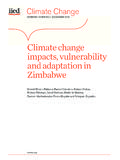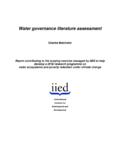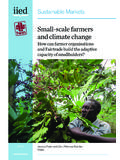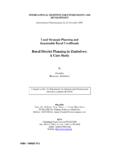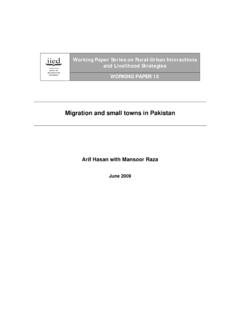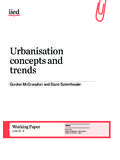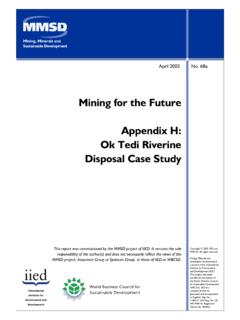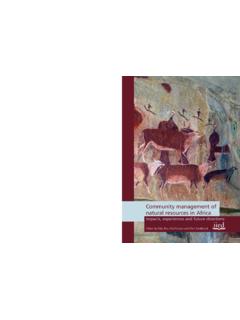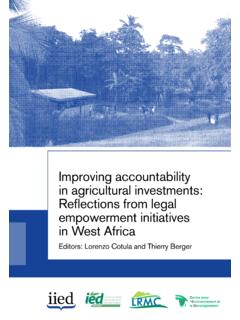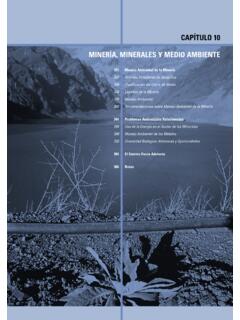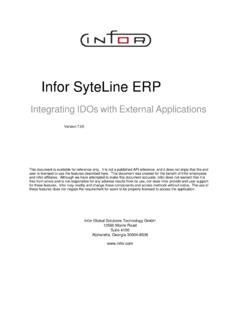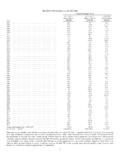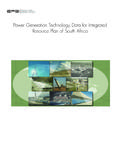Transcription of Charcoal - pubs.iied.org
1 A study of Charcoal consumption, trade and production in Malawithe realityCharcoalPatrick Kambewa, Bennet Mataya, Killy Sichinga, Todd JohnsonCharcoal is potentially a renewable forest product. But current production and distribution methods in Malawi prevent reinvestment in the next cycle of harvest. Reversing the lack of incentives for reinvestment is a critical political and economic issue. As this study documents, the Charcoal industry is one of the largest in Malawi; if the product was exported, the annual foreign exchange income to the country would fall somewhere between that of tea (Malawi s 2nd-largest export after tobacco in 2006) and sugar (3rd-largest). Charcoal is therefore a product with a very large domestic market, yet whose production is treated variously as either non-existent or illegal.
2 The question that we hope this report stimulates as the core of a lively debate among government officials, parliamentarians, interested parties, and the general public is simple: How do we want to produce this product to meet this market demand in a better manner? IIED Small and Medium Forest Enterprise Series No. 21 ISBN 978-1-84369-678-0 This report has been produced with the generous support of a number of agencies as detailed in the acknowledgements. Opinions expressed are those of the authors and study participants. All errors are the sole responsibility of the authors and the report does not express or imply policy or opinion of any of the supporting : the reality Kambewa et : the realityA study of Charcoal consumption, trade and production in MalawiPatrick KambewaBennet MatayaKilly Sichinga Todd Johnson2007 Retailer 33%Private taxes 12%Market fee 3%Transport 25%Producer 21%Packer 6%Published by the International Institute for Environment and Development (UK) in 2007 Copyright International Institute for Environment and DevelopmentAll rights reservedISBN: 978-1-84369-678-0 Further information on the contents of this report is available from:Patrick S.
3 KambewaTeam leader and socioeconomics and trade F. MatayaNatural resource management Killy SichingaStatistician and COMPASS II monitoring and evaluation R. JohnsonSenior community based natural resource management specialist and Chief of Party, COMPASS IIDevelopment Alternatives, a full list of publications please contact:International Institute for Environment and Development (IIED)3 Endsleigh Street, London WC1H 0DD, United catalogue record for this book is available from the British LibraryCitation: Kambewa, Mataya, Sichinga and Johnson. 2007 . Charcoal : the reality A study of Charcoal consumption, trade and production in Malawi. Small and Medium Forestry Enterprise Series No. 21. International Institute for Environment and Development, London, by: Eileen Higgins, email: by: Russell Press, UK on 80% recycled paper ContentsACKNOWLEDGEMENTSACRONYMS AND A BBREvIATIONSPREFACEEXECUTIvE SUMMARY1.
4 BACKGROUND AND INTRODUCTION2. METHODOLOGY, DATA COLLECTION AND Urban household energy Charcoal value chain Charcoal production survey3. URBAN ENERGY Energy Spending on Concluding remarks on urban energy use4. THE Charcoal vALUE Charcoal production Producing Adding value from production site to The Charcoal value Cost structure of the Charcoal value Concluding remarks on the Charcoal value chain5. Charcoal Charcoal use and implications for Charcoal production and woodland The Charcoal production Concluding remarks on Charcoal productionREFERENCESANNEX I. URBAN ENERGY CONSUMER QUESTIONNAIREANNEX 2. METHODOLOGY FOR URBAN ENERGY STUDYANNEX 3. LISTS OF TREE SPECIES: OBSERvED, EXPECTED AND PREFERREDANNEX 4. LISTS OF EXPECTED SPECIESANNEX 5. SPECIES COMPOSITION DENSITIESANNEX 6.
5 MALAWI URBAN ENERGY STUDY TEAMANNEX 7. MAP OF PRODUCTION SITES iiivvvii15566778101111121215192123232426 272829354146485657 AcknowledgementsThis document is a Technical Report submitted to the Forest Governance Learning Group (FGLG) Malawi country programme. It was prepared under USAID/Malawi Contract Number 690-C-00-04-00090-00, entitled Community Partnerships for Sustainable Resource Management in Malawi (COMPASS II) and awarded to Development Alternatives, Inc. on 30 April 2004. It has been produced with the support of the Government of the Republic of Malawi, through its Department of Forestry under the Ministry of Mines and Energy; United States Agency for International Development USAID, through its Malawi country mission; European Commission, through its delegation to Malawi; and International Institute for Environment and Development with support from the European authors take this opportunity to thank a number of organizations and individuals for the assistance and support they gave us during the conduct of this study.
6 First of all, we are indebted to the three main implementing partners:t Community Partnerships for Sustainable Resource Management in Malawi (COMPASS II). We acknowledge and express our sincere appreciation for the substantial financial and technical support received from USAID/Malawi. Compass II is a USAID/Malawi activity whose purpose is to enhance household revenue from participation in community-based natural resource management initiatives that generate income as well as provide incentives for sustainable resource use in Malawi. COMPASS II is implemented by Development Alternatives, Inc. and Forest Governance Learning Group (FGLG). We are grateful to the FGLG-Malawi for their valuable guidance throughout the various stages of the study, and their contribution to funding the fieldwork, with support from the European Union (EU) through the International Institute for Environment and Development (IIED).
7 The Forest Governance Learning Group is an informal alliance of in-country groups and international partners currently active in seven African and three Asian countries. FGLG-Malawi comprises government officials, NGOs, and development partners with a shared interest in connecting those marginalized from forest governance to those controlling Improved Forest Management for Sustainable Livelihoods Programme (IFMSLP). We acknowledge and express sincere thanks to the Government of Malawi-EU IFSLP project which aims to improve household security through more sustainable management of natural resources. It is implemented by the Department of Forestry with technical support from LTS three organizations contributed resources to different portions of this study, and without that support, this work could not have materialized.
8 The researchers are also grateful to the team of research assistants in the four urban areas for their dedication and untiring efforts. They were often required to work at odd hours, sacrifice some of their weekends, visit areas with difficult access, and ask questions whose potential responses or reaction from the respondents were unpredictable. Despite these challenges, the quality of data collected was excellent. Thanks also for the text editing by Julie , we would like to acknowledge the invaluable assistance we got from our respondents. These included the 3,945 urban households involved in the urban energy consumption survey; the traders who participated in the value chain survey; and the Charcoal markets, the Charcoal makers and the local leaders who participated in the Charcoal production survey.
9 Although the questions we asked were sensitive and sometimes annoying, they never tired of giving insightful responses. The ultimate success of this work was critically dependent upon the cooperation we got from these very important stakeholders. All errors in this report are the sole responsibility of the authors. Likewise, opinions expressed are solely those of the authors and study participants. These do not express or imply statements of policy or opinion of the Government of Malawi, European Union, United States Agency for International Development, European Commission, or any of the agencies of their respective governmental institutions. vAcronyms and abbreviations EuroCOMPASS Community Partnerships for Sustainable Resource Management in MalawiDFID Department for International Development (UK)ESCOM Electricity Supply Corporation of MalawiEU European UnionFAO Food and Agriculture Organization of the United NationsFGLG Forest Governance Learning GroupGDP Gross domestic productGoM Government of MalawiGvH Group village headHa HectareIFMSLP Improved Forest Management for Sustainable Livelihoods ProgrammeIIED International Institute for Environment and DevelopmentKg.
10 KilogrammeKm. KilometreMK Malawi KwachaTA Traditional authorityUK United KingdomUS$ United States dollarUSAID United States Agency for International DevelopmentvAT value added taxvH village headvPrefaceThe issue of Charcoal production and consumption in Malawi seems to be one of those issues that many intelligent and well-intentioned individuals and organizations have tried to resolve at various times over the past several decades. It is perhaps one sign of how complex and challenging an issue Charcoal has become to note that none of the previous efforts has succeeded in solving the Charcoal problem. One reason for these past failures is that technical forestry solutions or equally unsuccessful National Forest Seasons ( , annual tree planting efforts that have not resulted in any noticeable increases in forest cover) have been used to resolve what fundamentally is not a technical forestry issue at all.
